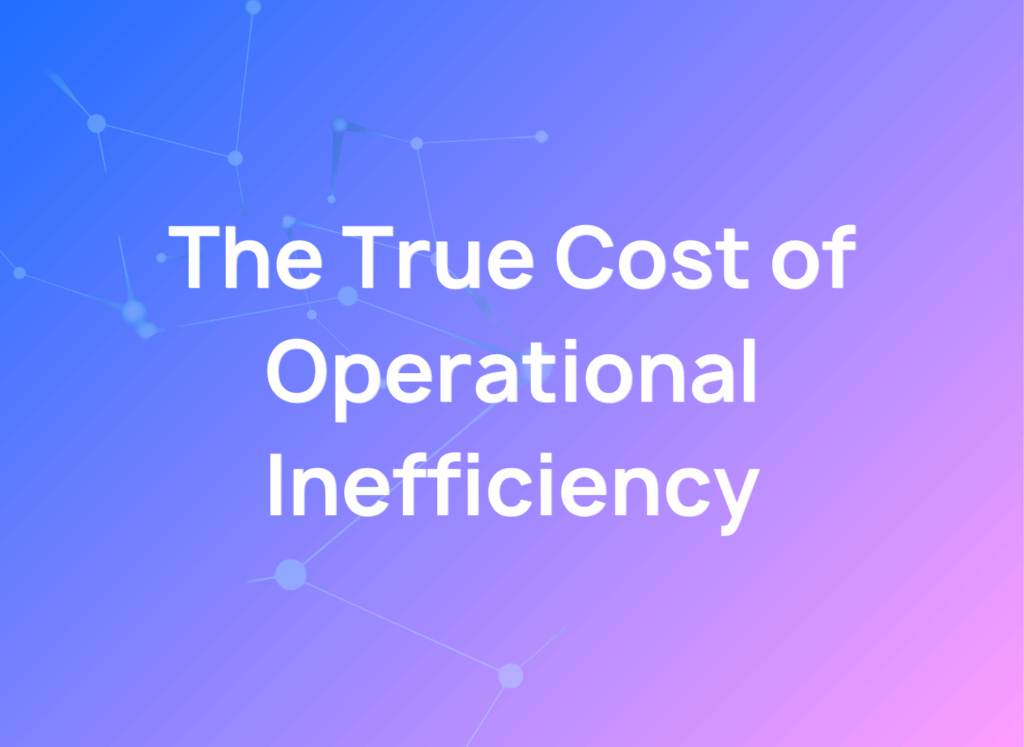Why Sales Territory Alignment Still Runs on Spreadsheets (And How to Move Beyond It)
Why Sales Territory Alignment Still Runs on Spreadsheets (And How to Move Beyond It)
TL;DR
- Most pharma territory alignment still happens in spreadsheets.
- Manual handoffs cause version chaos, errors, and long delays.
- Data is fragmented across CRM, HCP databases, and incentive systems.
- This leads to uneven workloads, missed coverage, and wasted hours.
- Our Sales Territory Alignment Digital Worker completes the entire process, end-to-end.
Intro
Most pharma and biotech companies still depend on spreadsheets for sales territory alignment. Passing files back and forth between teams creates errors and slows everything down. Fragmented data and an outdated medley of SaaS tools all keep processes manual - costing time and money. But a better way exists, making alignment faster and more accurate.
Despite all the talk of "pharma digital transformation," a core commercial process remains stuck in the past. For most organizations, sales territory alignment still happens in Microsoft Excel. Spreadsheets are passed around like batons between Sales Operations, Finance, and HR, accumulating changes, introducing errors, and creating a trail of version chaos. This isn't a modern business process; it's a high-stakes fire drill that drains resources and delivers suboptimal results.
Every realignment cycle forces teams to manually stitch together data, negotiate boundaries, and hope the final plan is both fair and effective. It’s time to look under the hood of this broken process and explore a more intelligent, automated path forward for pharma commercial excellence.
The Pain Beneath the Process
The manual effort behind territory alignment is immense. Sales operations teams spend weeks, sometimes months, trying to reconcile prescriber lists, zip codes, and representative headcounts. Their goal is to strike a delicate balance between fairness for the reps, complete coverage of high-value healthcare professionals (HCPs), and the potential for performance.
What slows them down is a predictable set of obstacles:
- Fragmented Data: Critical information is scattered across multiple, disconnected systems. Sales Ops must pull data from the CRM, cross-reference it with third-party HCP databases, and finally align it with figures from incentive compensation platforms. Each data source has its own format and identifiers, making reconciliation a tedious, error-prone task.
- Frequent Market Shifts: Static territory maps become obsolete almost as soon as they are finalized. A competitor's launch or new clinical data can instantly change the value and potential of a territory. Spreadsheets can't adapt to these dynamics in real time, leaving sales teams operating with outdated assumptions.
- Human Bottlenecks: The entire process hinges on a series of manual reviews and approvals. Managers review maps, debate changes, and send feedback, often leading to more manual rework. This cycle of review, revise, and re-review creates significant delays and frustrates everyone involved. Each step introduces the potential for human error and subjective decision-making that can undermine the fairness of the final plan.
The Hidden Costs of Spreadsheet Thinking
Spreadsheets are powerful tools for simple analysis, but they were never designed for complex sales territory optimization. They cannot dynamically model variables like travel efficiency, account for the nuanced prescribing patterns of different HCP segments, or find the best possible outcome through continuously self-optimizing.
This "spreadsheet thinking" leads to significant, often unmeasured, costs:
- Uneven Workloads: Without true optimization, territories are often unbalanced. One rep may be overwhelmed with a dense, high-potential area, while another struggles to meet targets in a sparse, low-opportunity territory. This inequity breeds frustration, hurts morale, and can lead to higher turnover among your best talent.
- Critical Coverage Gaps: Manual alignment often misses key opportunities. High-value HCPs can be inadvertently left unassigned or placed in a territory where the rep lacks the capacity to provide adequate attention. These gaps represent lost revenue and a missed chance to build crucial relationships.
- Endless Rework Loops: A plan that looks good on paper often fails in the real world. When field managers and reps see the imbalances, the requests for changes start pouring in, triggering another round of manual adjustments. Each realignment cycle consumes hundreds of hours from highly skilled commercial talent who should be focused on strategy, not data entry.
Why Has Sales Operations Remained Stuck?
Sales territory management has largely remained a "shadow system" running on desktops. This resistance to change is rooted in several key blockers.
First, many organizations are constrained by legacy CRM systems. These platforms often lack the ability to integrate geographic, behavioral, and performance data seamlessly, making sophisticated territory analysis difficult. Without a unified data foundation, automation seems out of reach. Our Digital Workers, however, are able to pull information from multiple sources, meaning that they operate above your company’s data silos.
Second, there is a legitimate fear of compliance risk. The field sales structure is a regulated environment, and any automated system must be auditable and transparent. The perceived "black box" nature of some AI tools creates hesitation, as teams worry about their ability to explain and defend an algorithmically generated plan to compliance officers or HR. Digital Workers overcome this hurdle. They are all unified by a System of Work that provides complete observability - ensuring that everything they do is both compliant and auditable.
Finally, there is a fundamental lack of trust in AI to handle the nuance of HCP engagement. Relationships, historical context, and on-the-ground knowledge are all vital components of territory design. Many leaders believe an algorithm cannot possibly replicate the expert judgment of a seasoned sales manager. This creates a "we'll fix it next quarter" mentality. This is a problem that is perpetually postponed until the next alignment fire drill makes it impossible to ignore. Automation in this regard is already becoming a huge competitive advantage.
What Modern Sales Territory Alignment Looks Like
A growing number of pharma and biotech firms are replacing spreadsheets with AI-driven territory optimization powered by specialized Digital Workers. These aren't just analytics dashboards; they are autonomous agents that execute the end-to-end process, moving territory planning from an annual chore to a continuous optimization engine.
A modern Sales Territory Alignment Digital Worker operates as a system of work that:
- Unified Data Instead of Fragmented Spreadsheets: It automatically connects to your CRM, HCP databases, claims data, and HR systems. It ingests, cleans, and unifies this fragmented information into a single, reliable source of truth.
- Intelligent Territory Design Instead of Manual Guesswork: Building or adjusting territories in spreadsheets is slow and error-prone. The Digital Worker starts from clean data and allocates territories algorithmically - factoring in HCP potential and rep capacity. It generates balanced, optimized maps from scratch, ensuring fairness and coverage without hours of manual recalculation.
- Complete Line-by-Line Transparency: You can review key metrics within each allocation to clearly see how and why territories were structured. If adjustments are needed, you can easily iterate with the agent to refine the design. Once satisfied, the finalized territories can be seamlessly exported from the application.
One leading global Contract Research Organization (CRO) implemented our Sales Territory Alignment Digital Worker to revolutionize its planning process. By automating the entire workflow - from data ingestion to the generation of client-ready plans - they replaced their costly third-party software and eliminated manual spreadsheet work. The system’s human-in-the-loop functionality allowed managers to quickly refine AI-generated plans, combining algorithmic precision with real-world expertise.
The ROI of Letting Go of Excel
The benefits of automating sales territory alignment extend far beyond simply saving time for the Sales Ops team. Organizations that make this shift see tangible gains across the commercial function. The CRO that partnered with us, for instance, achieved $500,000 in annual cost savings by eliminating SaaS licenses and manual labor.
Beyond direct savings, the operational ROI is compelling:
- Improved Sales Productivity: By creating balanced territories where every rep has an equitable opportunity to succeed, organizations can see a 20% improvement in overall sales (eSpatial). Reps spend less time on inefficient travel and more time engaging high-value HCPs.
- Faster Go-to-Market: Planning cycles that once took weeks are compressed into hours. This acceleration is critical for new product launches, team expansions, or rapid realignments in response to market events.
- Reduced Representative Turnover: When reps trust that their territories are assigned based on a fair, transparent, and data-driven process, morale and motivation improve. This leads to higher engagement and lower turnover, saving significant recruitment and training costs.
- Enhanced Leadership Visibility: Executive leadership gains a clear, real-time view of true coverage, capacity, and market potential. They can move from making decisions based on anecdotal feedback to steering the sales force with data-backed confidence.
Conclusion: From Manual Chore to Strategic Advantage
Continuing to manage sales territory alignment with spreadsheets is no longer a viable strategy. The process is too slow, the costs are too high, and the results are too inconsistent. It drains valuable resources, frustrates your sales team, and leaves you vulnerable to competitors who can adapt more quickly.
Moving to an AI-driven approach with a Digital Worker transforms territory planning from a reactive, administrative burden into a proactive, strategic advantage. It combines the power of algorithmic optimization with the indispensable judgment of your field experts, all within a compliant and auditable framework. You get smarter HCP allocation, faster decision cycles, and optimized resource deployment - unlocking measurable business value.
Stop the spreadsheet fire drill. It’s time to empower your commercial teams with a system built for the complexity and speed of modern pharma.
Automating pharma territory alignment replaces slow, error-prone spreadsheets with a modern, AI-driven workflow. This process starts by unifying all your scattered data—from CRM, HCP databases, claims, and HR systems—into a single, reliable source of truth.
From there, intelligent algorithms design balanced territories by analyzing HCP potential, representative capacity, and travel efficiency. This approach to territory planning automation ensures fair workloads and complete market coverage.
The best systems include human-in-the-loop controls, allowing managers to review and refine the AI-generated plans for compliance and real-world accuracy. This dramatically shortens planning cycles from weeks to hours and allows you to continuously rebalance territories in response to market changes. The result is a more effective and motivated sales force.
Explore a dedicated territory planning tool to see how automation can enhance your sales ops strategy.
Digital Workers excel at unifying data from your CRM, HCP databases, claims, and incentive compensation systems—automating the entire data integration process for territory design. These intelligent agents seamlessly connect to all relevant platforms, extract and ingest fragmented data, and standardize disparate identifiers like NPI, account IDs, and geographic markers such as ZIP codes or sales bricks.
Once data is gathered, Digital Workers automatically normalize and de-duplicate records, resolving conflicts to create a single, governed source of truth for every healthcare professional and account. This clean, unified data layer powers territory optimization, enabling Digital Workers to design balanced, auditable, and fair territory plans with full transparency.
By harnessing Digital Workers, pharma and biotech teams eliminate manual data wrangling, reduce errors, and accelerate the path from raw data to effective territory alignment and actionable reporting.
Digital Workers make fair territory assignment and compliance straightforward by automating the entire process. Instead of relying on spreadsheets, these intelligent agents use advanced algorithms to balance territories using objective metrics like HCP potential, prescriber access, and representative capacity. This ensures every rep is assigned a territory that is equitable and optimized for success.
For compliant territory design, Digital Workers embed your organization’s specific policy rules and guardrails—such as travel distance limits, state boundaries, and account exclusions—directly into their workflows. This guarantees every assignment aligns with regulatory and internal guidelines.
Every territory plan generated by a Digital Worker comes with full audit trails and line-by-line justifications, giving you complete transparency into every decision. Managers remain in control, reviewing and refining results as needed. With Digital Workers, pharma sales alignment becomes both defensible and fully auditable without the burden of manual effort.
Digital Workers are designed for rapid territory rebalancing and continuous optimization. Unlike traditional realignments that happen once a year, Digital Workers automatically integrate data from your CRM, HCP databases, and claims systems, ensuring you always have the most up-to-date market intelligence at your fingertips.
These specialized agents handle fast scenario planning—instantly running what-if simulations when you need to respond to product launches, access changes, or shifts in your customer landscape. Digital Workers use rules-based triggers to adjust territory boundaries, maintaining fairness and comprehensive coverage for your sales teams.
With this level of automation, you can achieve auditable rebalancing in hours, not weeks. Finalized plans are easily exported into CRM and incentive systems so your field force can adapt on the fly.
Leverage Digital Workers for always-on pharma territory alignment and keep your organization agile—no matter how quickly the market evolves.





